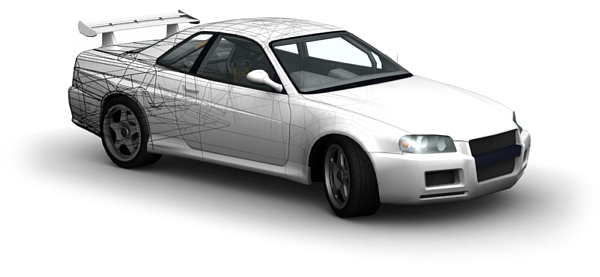
For Redline Edition, Moonbyte have given us a fantastic tool for ambience mods and it's called the "Color LUT". The Color LUT (AKA Color Lookup Table) allows for much easier ambience mod creation, while also making it easier for more in depth ambience mods to be fine-tuned. It's invalueable in CD:RE ambience mod creation. To get started, download the following neutral Color LUT and place it in .../mod_testing/[modname]/content/textures/ambience. Download: click At this point, we should decide which ambience we want to base our mod off of. I'll choose the Day ambience, meaning I'll copy the following files from our previously created reference directory: ...\textures\ambience: day.tex day.tga day_bd.dds day_bg.tex day_lut.tex day_lut.tga dayh.tex dayh.tga ...\ambience: day.amb If you want to just slightly adjust the feel of the existing ambience, feel free to open the day_lut.tga with your image editor. If you would like to have full control, please instead replace the day_lut.tga with the neutral_lut.tga we downloaded, and open it. What you are looking at now, is the Color Lookup Table. In case you opted for the neutral_lut.tga, the game engine has the exact same image. The game will compare our image to the image it has itself, and if there are any offsets in colors, it will display those ingame! This means, that if you were to make this Color LUT "negative", all the 3D rendered objects in the game will appear in negative. Feel free to try it if you'd like! There are many other things one can do with the LUT, like simulating color blindness (there are mods for that on the Workshop, actually), black and white, or... anything, really. You could even only have reds show in color and the rest in black and white. However, if you're done having fun with this and want to make a more serious mod, we're going to need to make some reference images. Start the game with mod_testing enabled and making sure to select the Day ambience we are overwriting, take some screenshots that will make good references. Make sure you capture shadows, various greens, industrial tiles, cars, etc. Also make sure you capture them losslessly, using the print-screen button on your keyboard, or otherwise a program that saves them as PNG or BMP will do just fine. Now import the best reference shots into your project and create an image of all the useful portions of the reference shots. After doing that, I reccomend putting the LUT layer in there in the top-let corner, so we can easily grab it later. Now we can start adjusting the colors. Using our reference images we'll be able to tune the colors to get the result we want. Make sure that any color corrections you make are applied to the layer with the LUT! Please refrain from using tools or plugins that only affect a limited range. This can quickly cause artifacts that will be noticable ingame. Brightness, Contrast, Hue, Saturation are all great tools. You can also adjust color curves if you wish. Do NOT use things like blur, glow, sharpen and so forth, as the results of those won't translate to the game. Remember, we are adjusting colors via a color lookup table. That's all the game is able to read from the LUT. When you're satisfied, go the Canvas Resize the image and Anchor is to the Top-Left. Enter 256 for width and 16 for height. If you put your Color LUT in the top-left, you'll end up with only our Color LUT afterwards! Now save the Color LUT over the old day_lut.tga and test your ambience ingame! If you still want to make some adjustments, just undo a few steps until you have your reference images back and adjust some more from there. Enjoy! In part 2 we'll go into in-depth ambience modding and we'll create custom textures as well. There likely won't be a full .amb tutorial as the LUT made the .amb files non-crucial to edit, which is a good thing, as they are quite complex to understand.